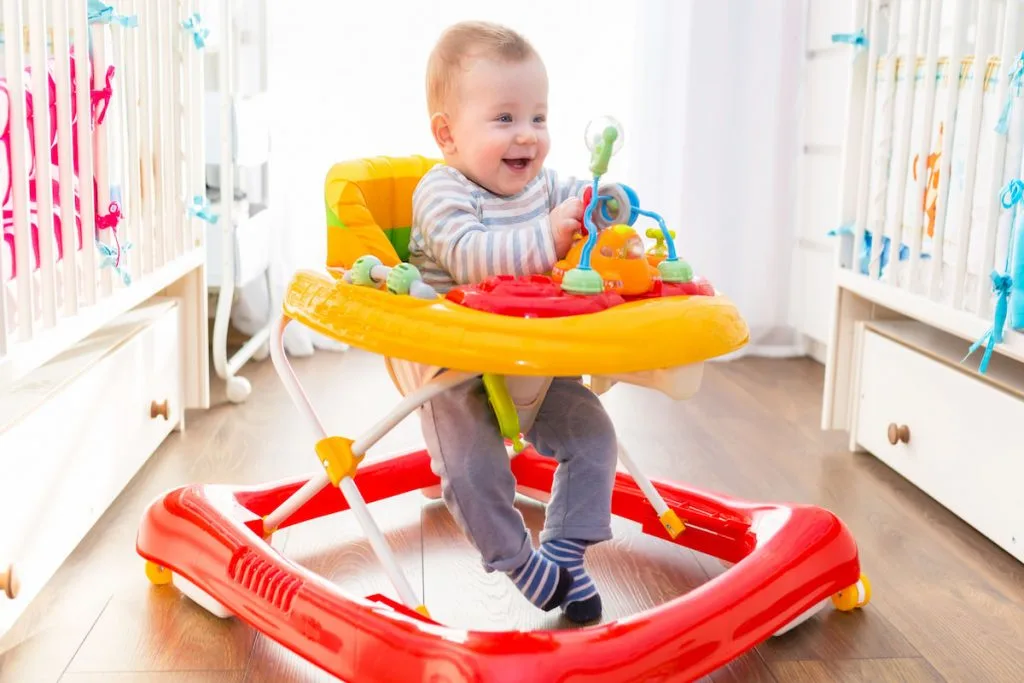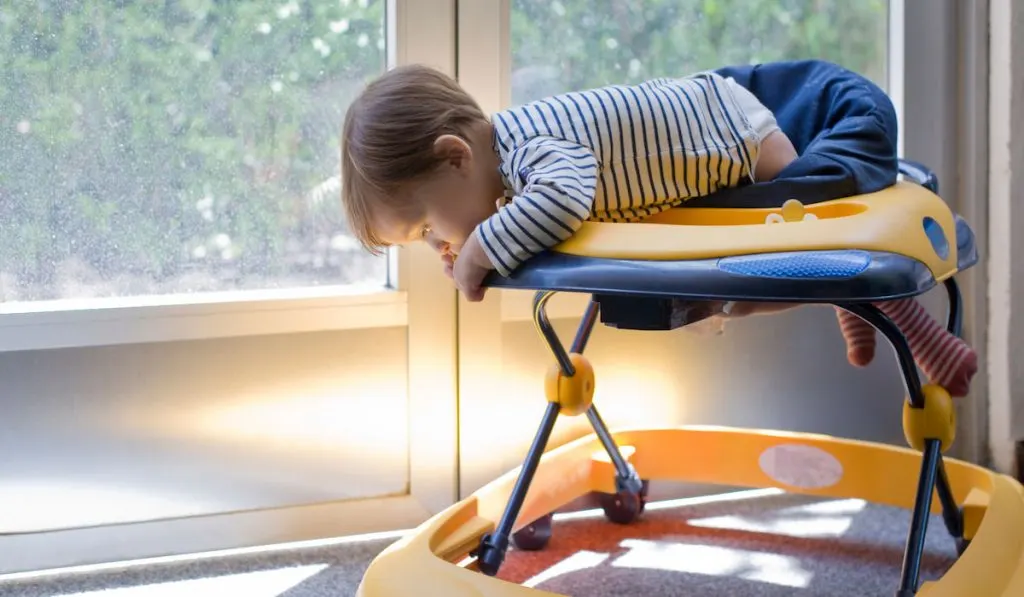When you’re a new parent, you eventually reach the phase where you need to find solutions for a baby who always wants to be on the move.
Of course, you’re probably always worried about your baby, but that window of time where they crawl everywhere and start to think about walking is particularly precarious. It can feel like you can’t look away for a second without them trying to eat something they shouldn’t or climb some furniture.
Buying a traditional baby walker or a jumper are great ways to keep your babies moving and help them learn to walk without worrying about whether they’re putting themselves in danger.
A baby walker versus a baby jumper — which is better?
Baby walkers are better for teaching your baby how to walk, but jumpers are good for peace of mind.
If you’re moving around the house or hanging out in the living room, it’s great to have your child in a baby walker because they can explore where they want and exercise their legs without you having to constantly hold their hands.

Conversely, jumpers are ideal for when parents need to guarantee their babies stay in one place. Your baby can sit in the jumper bouncing while you make dinner or take that important work call.
Let’s break down the benefits of each and what you need to know when it comes to buying either a baby walker or a jumper for your child.
Why Parents Love Baby Walkers
Baby walkers are fantastic because they encourage your baby to walk. Some kids take to walking faster than others.

Baby walkers are a good option for early and late walkers: The early walkers get the freedom they want to move around and explore, and the late walkers can sit in walkers and quickly learn that they can only get around by moving their legs.
Walkers are also relatively safe.
They typically come with a plastic table or barriers around the walker that protects the child from bumping into anything. Parents can also set some snacks on the tray to keep their baby happy as they stroll around.
For mobile babies, it’s hard to beat a nice walker. They give your baby early independence and build strong leg muscles for when they’re ready to walk.
You can also keep using your walker after your baby is walking.
There are typically a few months when your baby can walk but won’t know how to crawl out of the walker. It’s a great solution for when you want to keep your baby safer when you can’t always be right next to them.
Also, if you’re looking for a way to wear your baby out before bed or nap time, then simply set them in the walker and get them moving around! Soon enough, they’ll tire themselves out by pushing over to their favorite toys or following you around the house.

When Is a Jumper Better Than a Walker?
There are certain situations where a jumper is much better than a walker. Usually, they involve times when you can’t watch your baby like a hawk.
Parents typically position jumpers in rooms where they need to keep an eye on their baby but can’t be watching over them every second.
You can buy jumpers that look like walkers or jumpers that hang from doorways and give a baby a bit more spring.
For example, hanging a jumper in the kitchen doorway is a great solution for when you’re preparing meals or your morning coffee.
It’s better not to hold your baby when you’re frying eggs or making dinner. There’s too much risk involved in holding a baby when you cook.
Instead, you can plop your baby inside a jumper and watch them happily bounce away while you do your chores.
Parents who work from home also love a good jumper! A baby in a walker will always seem to walk off where you can’t see them when you’re in the middle of a virtual presentation or closing a deal on the phone.
Jumpers are stationary, so you never have to worry about your baby wandering off.
Jumpers are also normally better exercise for babies.
When in a walker, kids may get better practice at walking, but jumping up and down in a jumper is a wonderful workout for tiny legs. When they get out of the jumper, they’ll likely be roaring to give walking a try.

Possible Cons of Baby Walkers
The main issue with baby walkers is that babies can move around!
If you’re not watching them, they might collide strongly with a bookcase and knock something onto themselves. You also have to worry about stairs and the other risks of a mobile baby.
Also, when your baby gets bigger, you’re going to have to start worrying about them reaching for things outside of the protective table or barrier. At some point, they’ll be able to reach for things on countertops and even on the ground.
Walkers are also usually larger than jumpers. Some of them fold flat, but you should plan on having the walker take up space.
While this isn’t a concern for most parents, not everyone loves their rooms packed full of baby toys and supplies.

The Downsides of Baby Jumpers
The main downside of baby jumpers is how quickly babies outgrow them. You’ll find that you can put your baby in the walker for many more months than a jumper because babies eventually want to move around.
Older babies may be happy in a jumper for several minutes, but the older they get, the less time you will be able to leave them in the jumper.
Jumpers don’t give babies a ton of walking experience.
Jumping can strengthen their legs and help them stand longer, but they don’t get to walk. To get your baby on two feet, you’re going to have to take them out and get them walking around.
Jumpers require dedicated space, which isn’t always great if you’ve got other older kids running through the house.
Plenty of parents have to deal with other kids knocking into the jumper while the baby is inside.
Our Verdict
If you can watch your baby or have a safe space where they can move, the baby walker is our pick. However, for parents who need a spot where they can put their baby while they take care of chores or get work done, the jumper is the safer choice.
